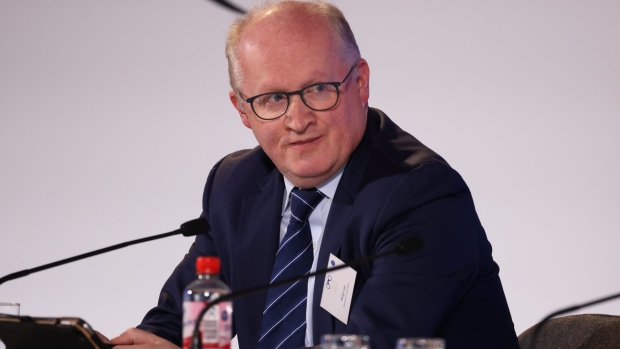May 5, 2024
ECB’s Lane Says He’s More Certain Inflation Is Returning to Goal
, Bloomberg News

(Bloomberg) -- European Central Bank Chief Economist Philip Lane said recent euro-area data have made him more certain that inflation is returning to the 2% goal, raising the likelihood of a first interest-rate cut in June.
Speaking in an interview with Spanish newspaper El Confidencial, the Irish official cited a report on consumer prices last week that showed pressures in the service sector eased for the first time since November. That was “an important initial step in the next phase of bringing inflation down,” according to Lane.
“Both the April flash estimate for euro area inflation and the Q1 GDP number that came out improve my confidence that inflation should return to target in a timely manner,” he was cited as saying. “So, as of today, my personal confidence level has improved compared with our April meeting. But of course, more data will arrive between now and June.”
While inflation held at 2.4% last month, an underlying measure that strips out volatile items including energy and food continued to retreat. Gross domestic output meanwhile rose 0.3% in the first three months of the year — more strongly than economists had expected.
The data did little to change expectations that ECB officials will lower borrowing costs at their June 6 meeting for the first time after their barrage of hikes. What happens after is less clear, with many observers speculating how a potential delay to monetary easing in the US will affect the euro area.
Speaking later Monday, Lithuanian central-bank head Gediminas Simkus reiterated that he sees three reductions in borrowing costs in 2024.
“If everything evolves the way it’s in the baseline, my thinking is that there are some other interest-rate cuts coming in the future,” he told reporters in Vilnius. “This year I would expect three cuts and not sure about four.”
Lane said the ECB will be driven by the European outlook, and that the combined effects of decisions taken by the Federal Reserve would be “largely contained.”
“We should not exaggerate the impact,” he said. “The US economy and US interest rates affect the euro area in different ways, and essentially, these different mechanisms work in opposite directions.”
Lane also said that officials will keep a close eye on events in the Middle East, and that they need to be “very careful” in their analysis.
“It is a month-by-month assessment, but in the longer term we have to accept that we live in a world that is going to face a lot of geopolitical tensions over a number of years,” he said.
--With assistance from Mark Schroers and Milda Seputyte.
(Updates with ECB’s Simkus starting in sixth paragraph.)
©2024 Bloomberg L.P.






